Louis XIV, the Palace of Versailles, absolute monarchy… Why don’t we take a closer look at the emergence of the nation state in early modern France? Revise your French history with help from the artworks of the Palace of Versailles!
Versailles and the Royal Court
Louis XIV, King of France, is shown here in his coronation finery in a portrait by Hyacinthe Rigaud:

Louis XIV, King of France (1638-1715) (Hyacinthe Rigaud)
Le lien vers le site collection
The reign of Louis XIV
On 10 March 1661, the day after the death of Cardinal Mazarin, the 23-year-old Louis XIV announced that he would henceforth govern alone, with no first minister. He surrounded himself with men selected not for their high birth, but instead for their abilities and loyalty, men such as the Marquis de Louvois and Jean-Baptiste Colbert.
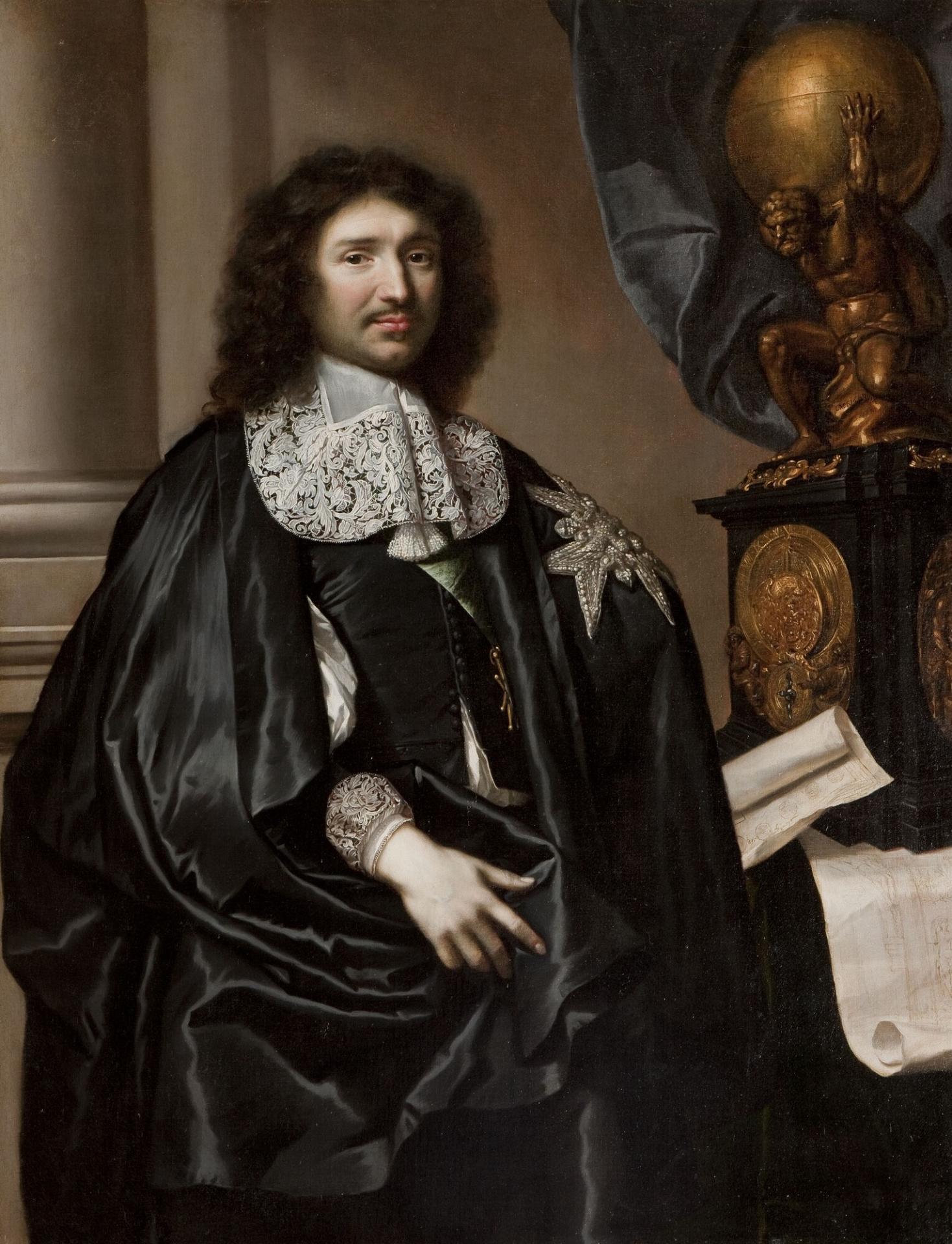
Jean-Baptiste Colbert (1619-1683) (Claude Lefebvre)
Louis XIV fashioned a new style of government, much more centralised than that of his predecessors.

Louis XIV holding the Seal, 1672 (unknown artist)
Le lien vers le site collection
The scene shown above depicts Louis XIV surrounded by his Counsellors of State: the king sits at one end of the rectangular table; across from him is the Grand Audiencier, whose role was to present the king with orders for his signature and letters requiring a response.
Louis XIV’s centralisation of power saw the creation of a new category of royal officer, the intendants, who were dispatched to the provinces with the task of steering the kingdom’s economic development. From the Palace of Versailles, Louis XIV ruled over a centralised state centred upon his own royal person. His motto "Nec pluribus impar" translates roughly as par "like no other," a choice he explained in his Mémoires.
But who was Louis XIV (English subtitles)?
In 1662, Louis XIV commissioned the first great campaign of construction work at Versailles, on the site of a simple hunting lodge inherited from his father Louis XIII. From this date until his death in 1715, the Palace and Estate of Versailles underwent a vast programme of building work.
Discover the history of the Palace of Versailles, from Louis XIII’s hunting lodge to the onset of the French Revolution, in this video:
Louis XIV resided on the first floor of the central section of the Palace, where three apartments were kept at his disposal.
Assisted by Jean Colbert, he oversaw the administrative and financial reorganisation of his kingdom, while also working to develop French trade and manufacturing from his base in Versailles. With the help of Louvois, he reformed the army and won a string of military victories.
More about the reign of Louis XIV
The Royal Court at Versailles
At Versailles, Louis XIV strictly imposed courtly etiquette, the corpus of tacit rules by which noble courtiers were expected to abide, passed down since the reign of Henri III. Each day at court was strictly codified, as Madame Palatine explains in a letter to her aunt Sophie from 1676: "First I went to Versailles, where we were kept busy all day. We hunted from morning until three in the afternoon; upon returning from the hunt we changed clothes and went up to play, remaining there until seven in the evening; then we went to the theatre, which did not finish until half past ten; after the theatre we took supper; after supper it was time for the ball, which went on until three in the morning, and only then did we retire to bed.” (Letter from Madame Palatine to her aunt Sophie, 14 December 1676).

View of the Palace and Gardens of Versailles, as seen from the Avenue de Paris, 1668 (Pierre Patel)
Le lien vers le site collection
Louis XIV decided to make Versailles his primary residence, commissioning an ambitious programme of construction work with contributions from some of the most celebrated artists of the age. The royal court was formally transferred to Versailles in 1682. By that time the Palace had become a miniature city, a sparkling symbol of the absolute monarchy.
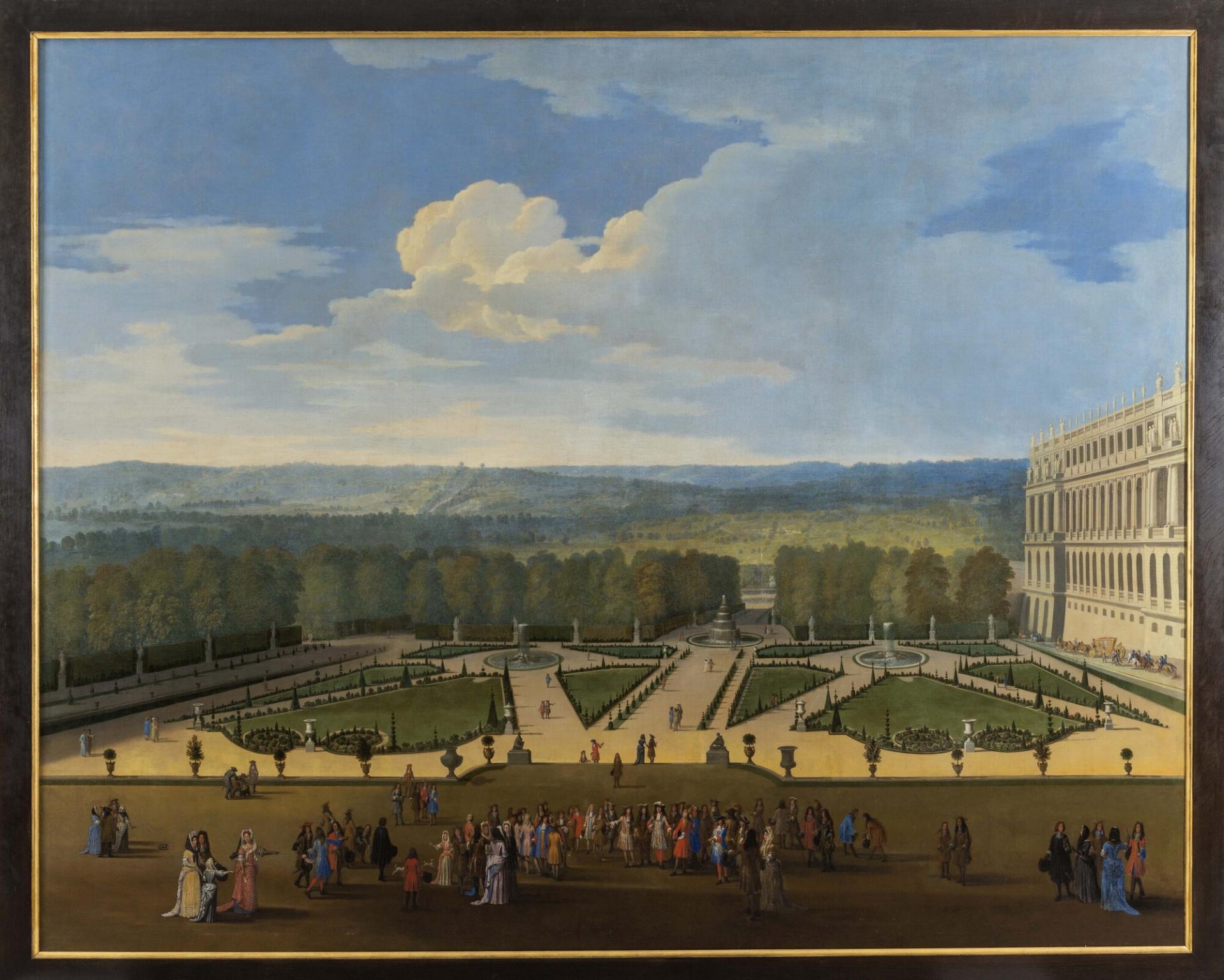
Louis XIV takes his promenade on the North Lawn, c. 1688 (Etienne Allegrain)
Le lien vers le site collection
Writing in his Mémoires, Saint-Simon recalls that: “Not only did he [Louis XIV] notice the presence of the most distinguished courtiers, but those of inferior degree also. He looked to the right and to the left, not only upon rising but upon going to bed, at his meals, in passing through his apartments, or his gardens of Versailles, where alone the courtiers were allowed to follow him; he saw and noticed everybody; not one escaped him, not even those who hoped to remain unnoticed. He marked well all absentees from the Court, found out the reason of their absence, and never lost an opportunity of acting towards them as the occasion might seem to justify. With some of the courtiers (the most distinguished), it was a demerit not to make the Court their ordinary abode… for those who never or scarcely ever came it was certain disgrace." (Mémoires, 1700).
The Palace of Versailles, now the official residence of the King of France, was the material expression of the sovereign’s determination to bend the nobility to his personal authority. Versailles became the second "capital of the kingdom".
Power and glory
Louis XIV was a passionate lover of the arts, and throughout his reign he adopted a bold and ambitious cultural policy. Taking his place alongside François I in the long lineage of royal patrons of the arts, the ‘Sun King’ wanted the superiority of the Kingdom of France to be represented in its artistic output. He thus encouraged artists to celebrate his own grandeur, and that of his kingdom.
During his reign countless artists received royal patronage, including such well-known figures as Molière, Lully, Racine and Le Brun. The Palace of Versailles became a prestigious stage on which the king presented comedies, operas and tragedies, and also held elaborate celebrations such as the legendary Delights of the Enchanted Island.
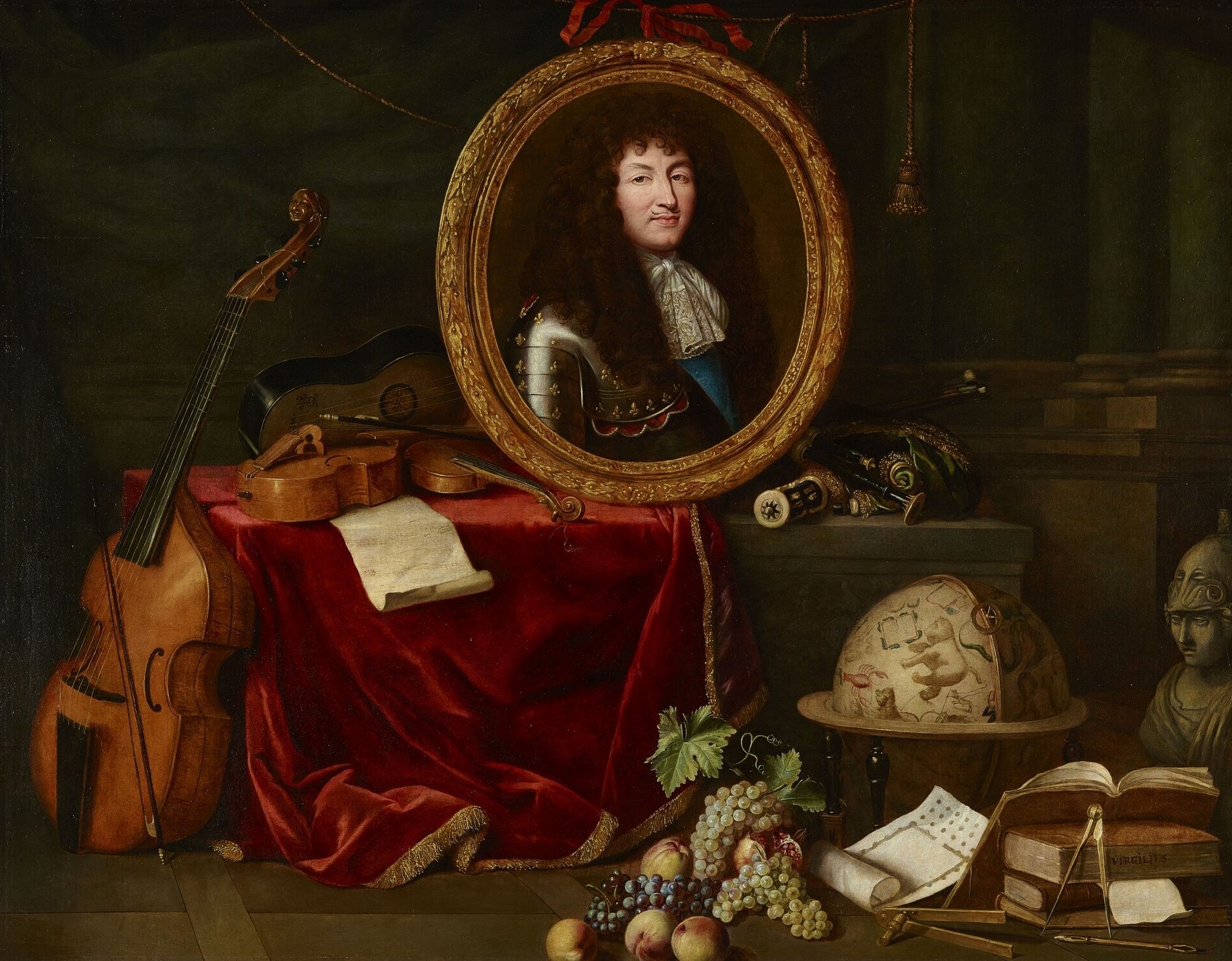
Louis XIV surrounded by the attributes of the arts and sciences (Jean Garnier)
Le lien vers le site collection
Louis XIV’s artistic inclinations were a defining feature of his reign, and his policy towards the arts was bold and expansive. His reign saw the foundation of the Royal Academy of Dance in 1661, the French Academy in Rome in 1666, the Royal Academy of Architecture in 1671 and the Academy of Opera in 1669 (which subsequently became the Royal Academy of Music in 1672).
The king also took a keen interest in the sciences, making Versailles a veritable laboratory which housed all sorts of scientific research and demonstrations. The foundation of the Royal Academy of Sciences in 1666 was a further expression of Louis XIV’s determination to place culture and knowledge at the heart of his model of absolute power. This strategy of co-opting the arts and sciences to exalt the virtues of royal power helped to ensure that this era has passed into posterity as the “Century of Louis XIV."
The Sun King’s wars
Working in the service of the king, Sébastien le Prestre, Marquis de Vauban, owes his reputation to the numerous forts and citadels he designed and built in order to protect the Kingdom of France. Appointed General Commissioner for Fortifications in 1678, Vauban executed his own recommendations to Louis XIV: "to protect his bailiwick.” His vision was to protect the kingdom by constructing a network of fortified citadels along its exposed eastern border, including the forts of Besançon and Briançon.
Although the integrity of the kingdom’s borders was assured by Vauban’s famous “pré carré” policy and network of fortifications, Louis XIV nevertheless engaged in numerous military campaigns in order to assert France’s hegemony in Europe. For the Sun King, war was a means of affirming his personal power and authority. Each victory made the glories of the King of France shine a little more brightly.
Below are two depictions of Louis XIV being crowned by an allegorical figure representing Victory:
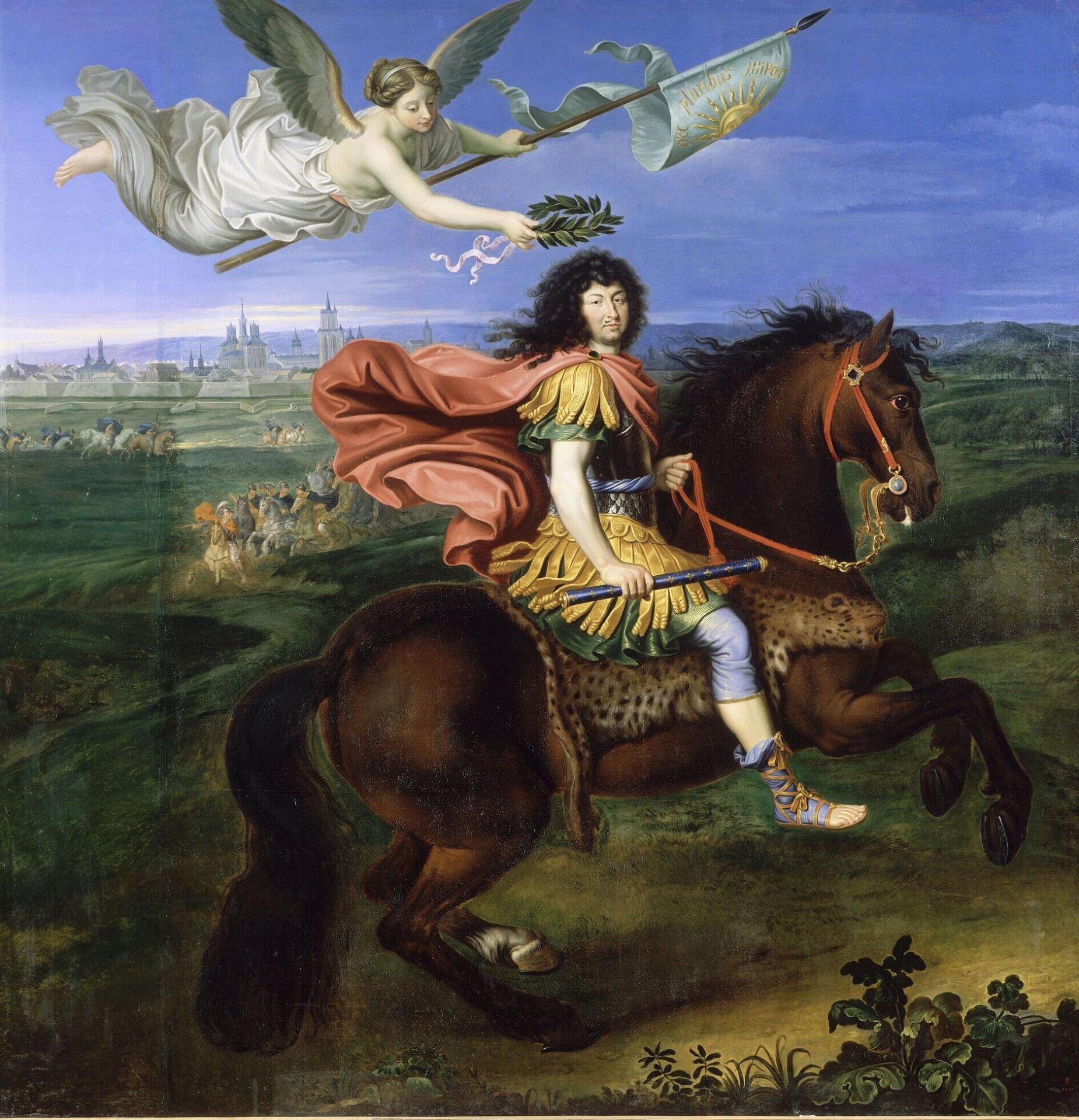
Louis XIV, King of France, crowned by Victory during the siege of
Maastricht, 1st July 1673 (Pierre Mignard)
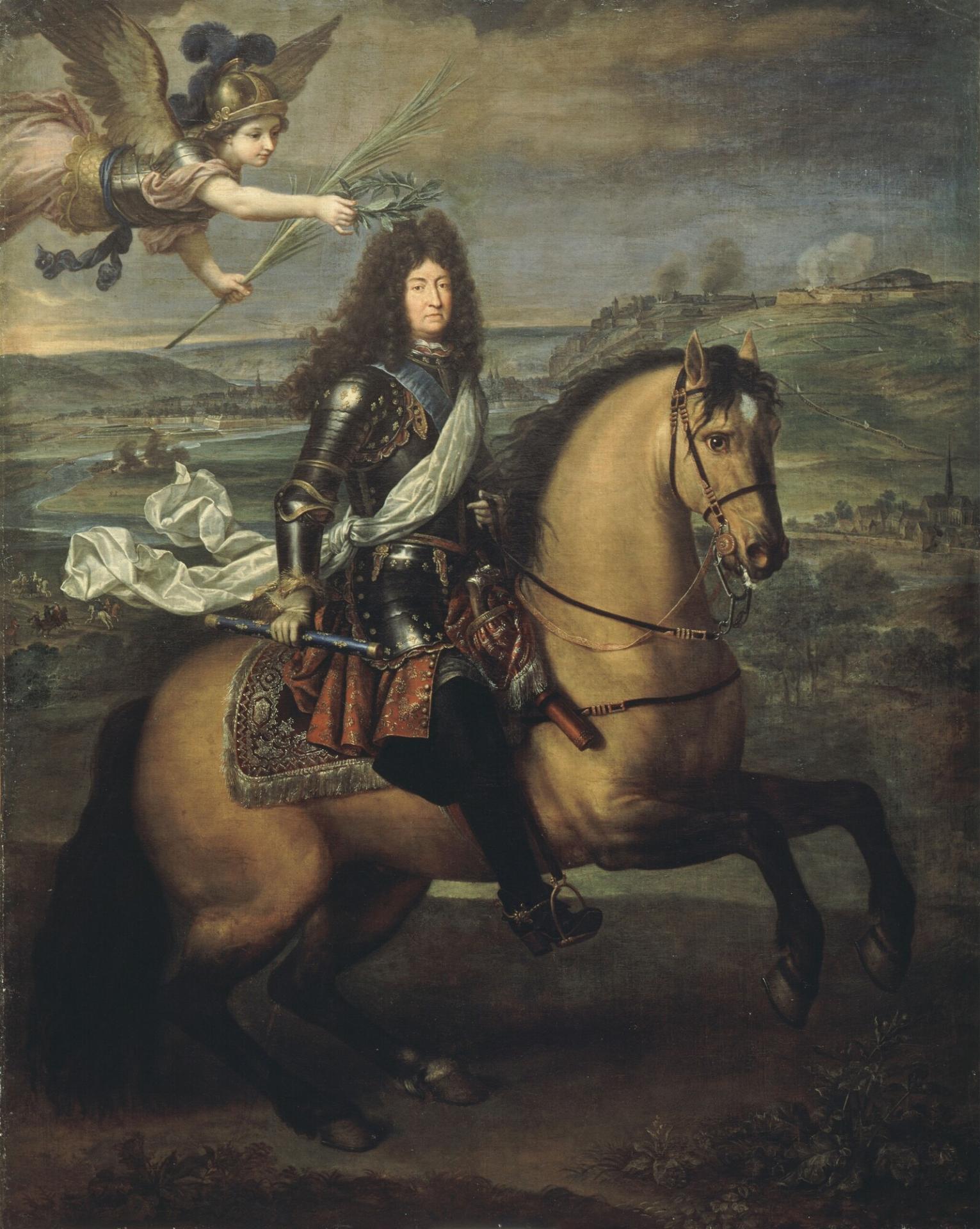
Louis XIV on horseback, crowned by Victory during the siege of
Namur (Pierre Mignard)
During the period in which he reigned alone, from 1661 until his death in 1715, Louis XIV’s time on the throne included almost 35 years of war. The young monarch’s first major war was the War of Devolution, which pitched France against Spain in 1667-1668. The aim of this campaign was to assert the claims of Louis XIV’s Queen Maria-Theresa following the death of King of Spain Felipe IV, especially since the Spanish had failed to pay the dowry of 500,000 Ecus promised when the pair wed in 1660.
Less than four years later, Louis XIV engaged in the Franco-Dutch War (1672-1678), opposing France and her allies and the Quadruple Alliance of the Dutch Republic, Brandenburg, Spain and the Holy Roman Empire. France emerged victorious, ending the war with the Peace of Nijmegen and cementing her position as the leading European power. This was primarily a commercial conflict, intended to stifle the growing economic power of the Dutch Republic (Holland in particular).
Fought between 1688 and 1697, the War of the League of Augsburg pitched France and a small circle of allies against a vast coalition of rival European powers, opposed to the unification of Louis XIV’s territorial holdings. Known as the League of Augsburg, or the Grand Alliance, this coalition was led by William of Orange.
Between 1701 and 1714, Louis XIV’s attention was absorbed by the War of the Spanish Succession, a conflict between several European powers keen to claim the throne of Spain, left vacant by the death of Carlos II. The latter’s will named Louis XIV’s grandson as his rightful successor. This was to be the last great war waged by the Sun King, and resulted in the accession of a Frenchman to the Spanish throne: Philip V, Duc d'Anjou, grandson of Louis XIV and the Infanta Maria Theresa. But Philip V was only permitted to take the Spanish throne on the condition that he and his descendants renounce their claim to the throne of France, even if the other princes of the blood should die first. Although not a total victory for Louis XIV, the War of the Spanish Succession nonetheless allowed him to establish the Bourbons as Spain’s ruling dynasty, an arrangement which endures to this day. But this long, costly war brought Louis XIV’s reign to a subdued end, with France exhausted and nearly bankrupt after decades of conflict.
On 1 September 1715, Louis XIV passed away in bed at the Palace of Versailles.
Discover Versailles through its iconic spaces, people and artworks




